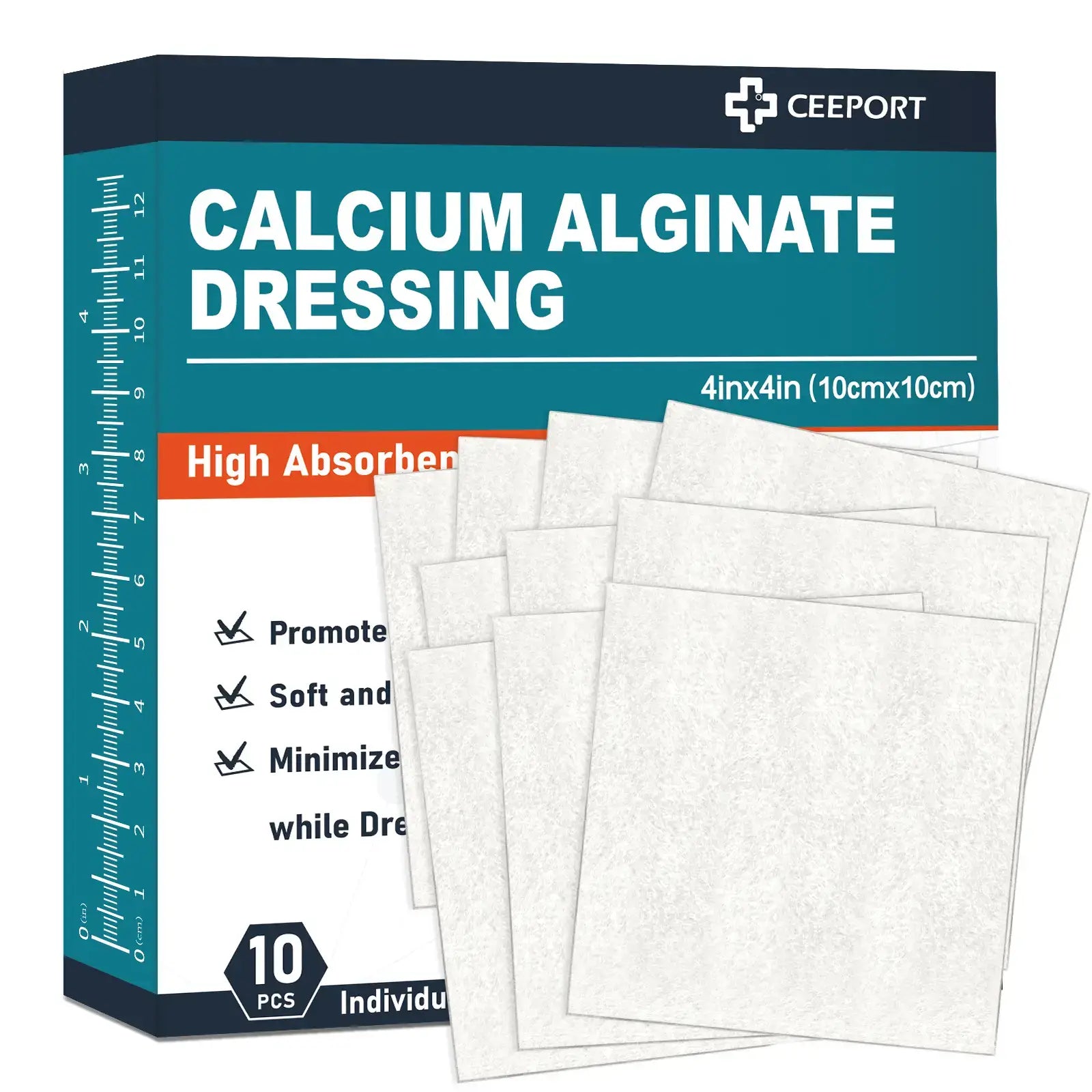
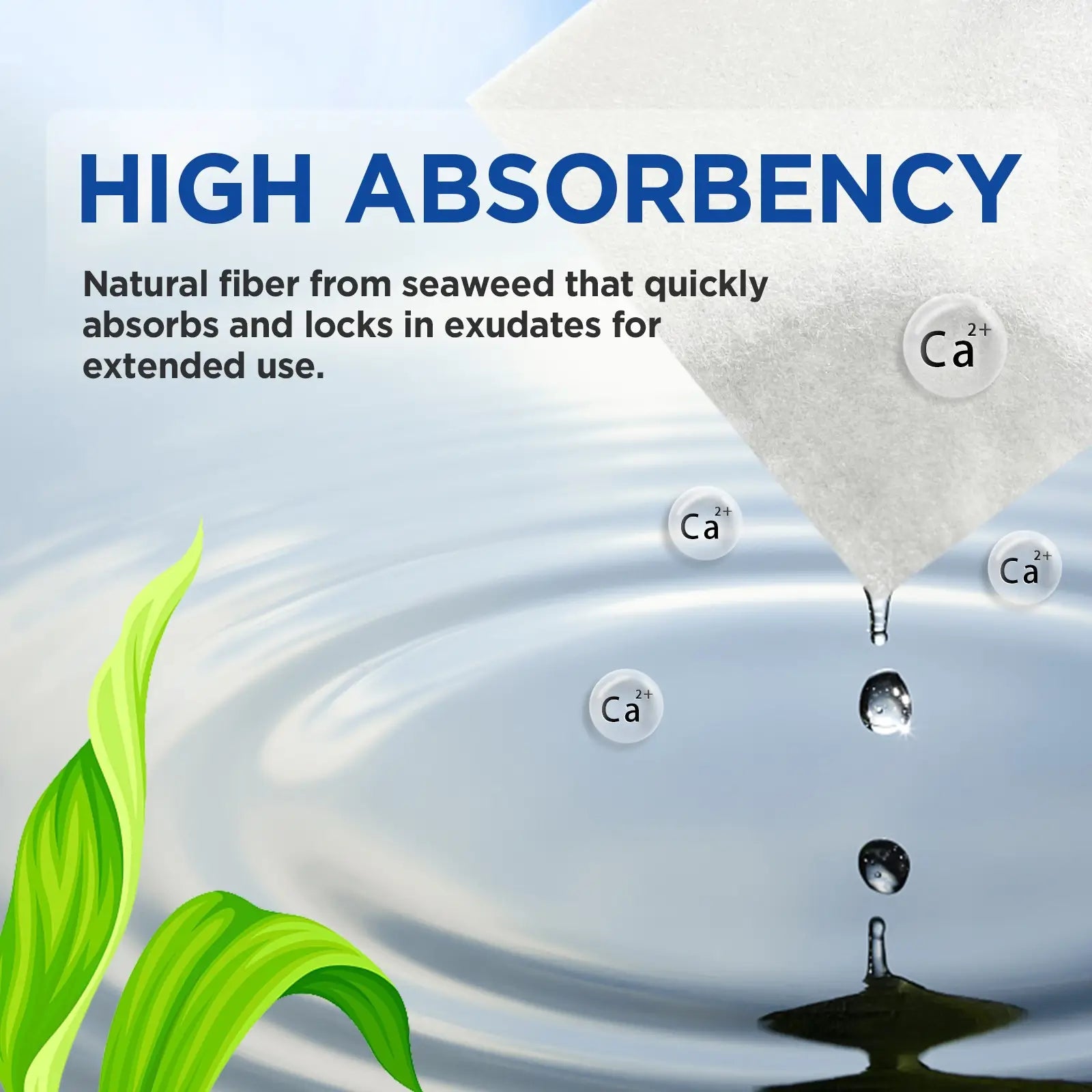
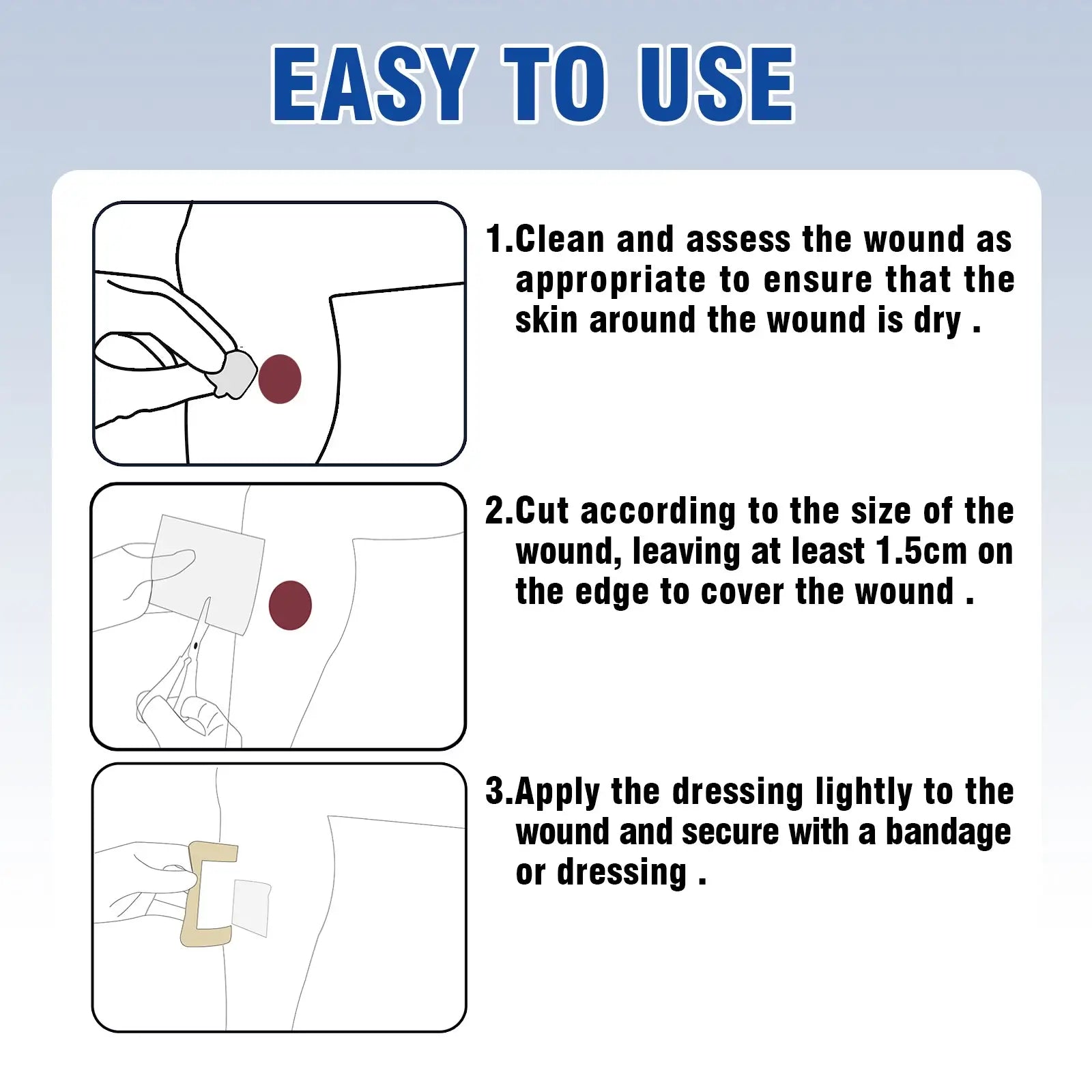

Silver Calcium Alginate – Moisture-Balancing Antimicrobial Dressing
Indications
This product is suitable for all kinds of medium to high exudative wounds, acute and chronic bleeding wounds, difficult-to-heal wounds, donor site wounds, and various cavity wounds.
For example, ulcers, bedsores, diabetic foot, surgical wounds, sinus tracts, 1st & 2nd degree burns, etc.
DETAILS
Material
- Natural seaweed
- Calcium ion
Main Mechanism
- It forms a hydrogel on the wound surface, moisturizing the wound and promoting healing.
- The exchange of Ca²⁺ and Na⁺ activates prothrombin, promoting coagulation.
- It protects nerve endings and alleviates wound pain.
- The fibers absorb moisture and swell. Bacteria are trapped between the fibers, providing antibacterial properties.
Key Features
- High absorption capacity
- Excellent wet and dry strength
- Fast gelling
- Promotes healing through a moist wound environment
- Comfortable and soft, painless removal
Cautions
- This product is not suitable for dry wounds.
- Clean the wound and dry the surrounding skin before use.
- Ensure the dressing covers at least 2 cm beyond the wound edge.
- The dressing should not stay on the wound for more than one week.
- When wound exudate decreases, discontinue use of this product and switch to other dressings, such as hydrocolloid dressings.
- When using packing strips, first determine the size and depth of the wound. Start filling from the base of the wound, avoiding dead spaces to ensure proper healing.
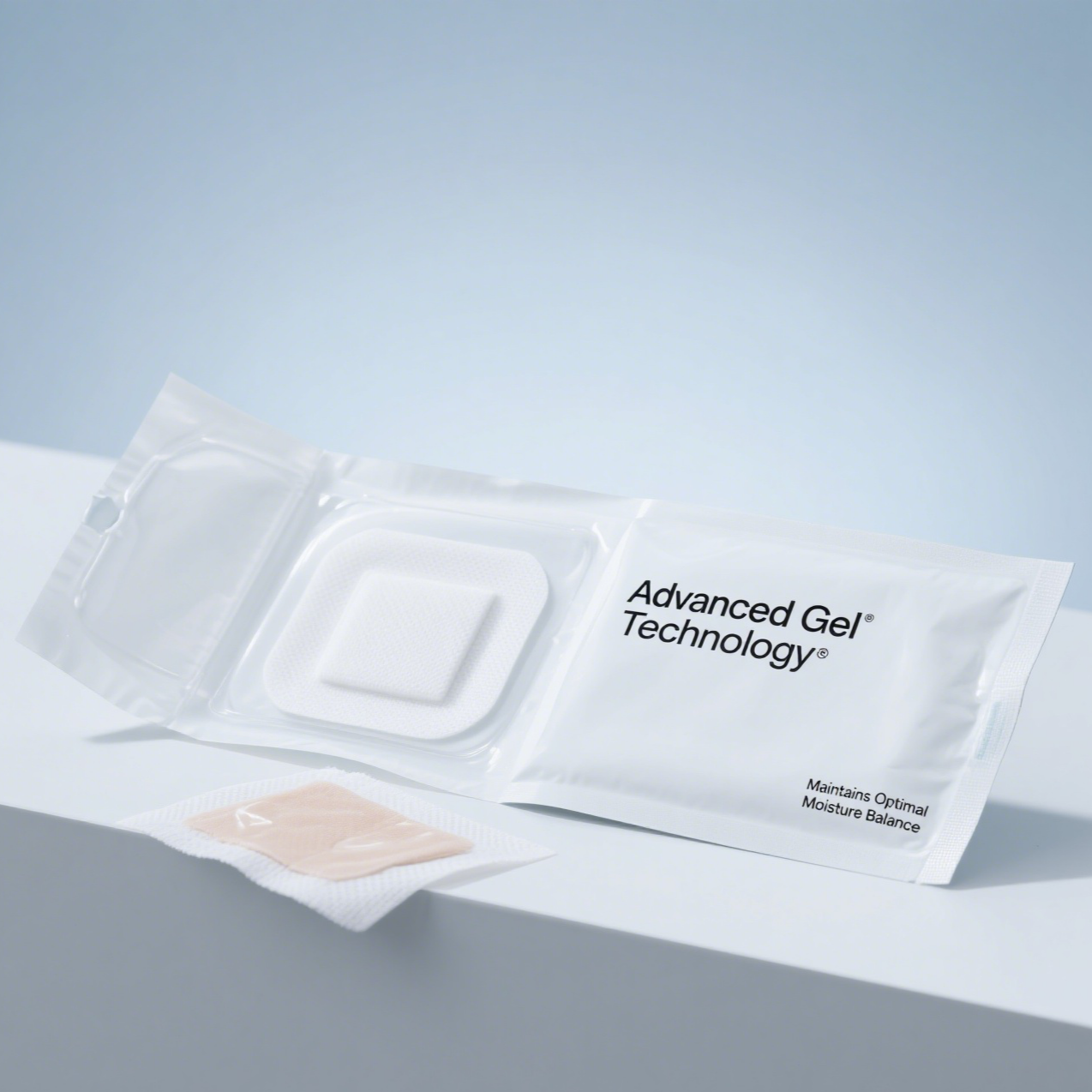
Product Overview
This silver calcium alginate wound dressing combines high absorbency with sustained silver-ion release to support optimal healing. Ideal for moderate to heavy exudate wounds—including diabetic ulcers, burns, and post-surgical sites—it forms a soft gel on contact with wound fluid, maintaining moisture balance while providing antimicrobial protection.
How It Works
Moisture Management & Gel Formation
The calcium alginate fibers absorb wound exudate and exchange calcium ions with sodium in the fluid, forming a soft, conformable gel that maintains an optimal moist environment for tissue repair.
Sustained Antimicrobial Action
Embedded silver ions in the silver calcium alginate wound dressing release steadily into the gel matrix, disrupting bacterial cell walls and reducing bioburden, even in high‑risk wounds.
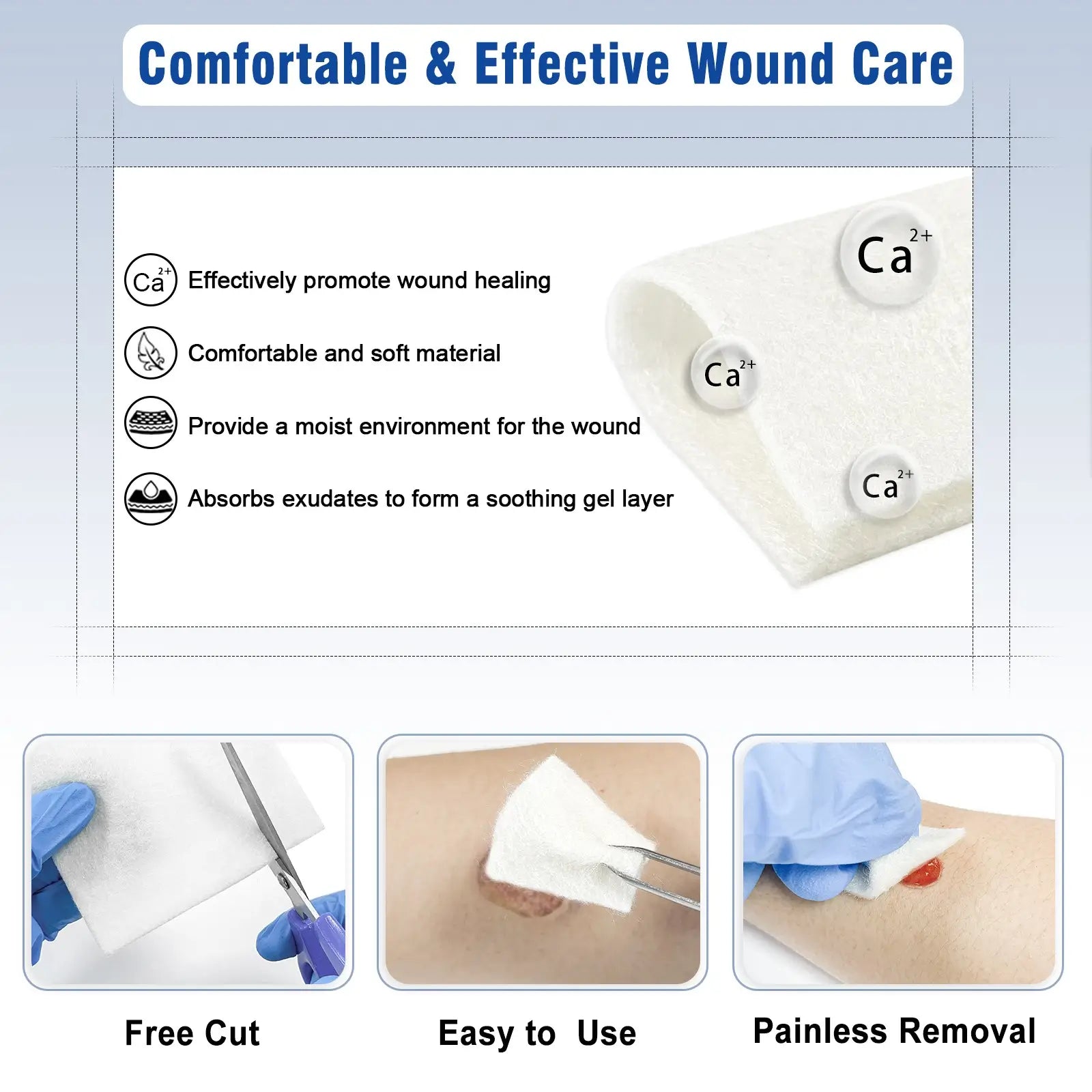
Directions for Use
Wound Preparation
- Gently cleanse the wound using sterile saline solution. Carefully pat the peri-wound skin dry to avoid irritation.
- Choose a silver calcium alginate dressing pad sized to extend at least 1 cm beyond the wound margins to ensure full coverage.
Dressing Application
- Place the silver calcium alginate dressing directly over the wound bed, ensuring full contact.
- Smooth the dressing gently to conform to the wound contours without causing displacement.
- Secure with appropriate secondary dressing or fixation method as needed.
Dressing Change Frequency
- Inspect the dressing daily for signs of saturation or odor.
- Replace the silver calcium alginate dressing every 2 to 5 days, or immediately if fully saturated or if clinical signs indicate.
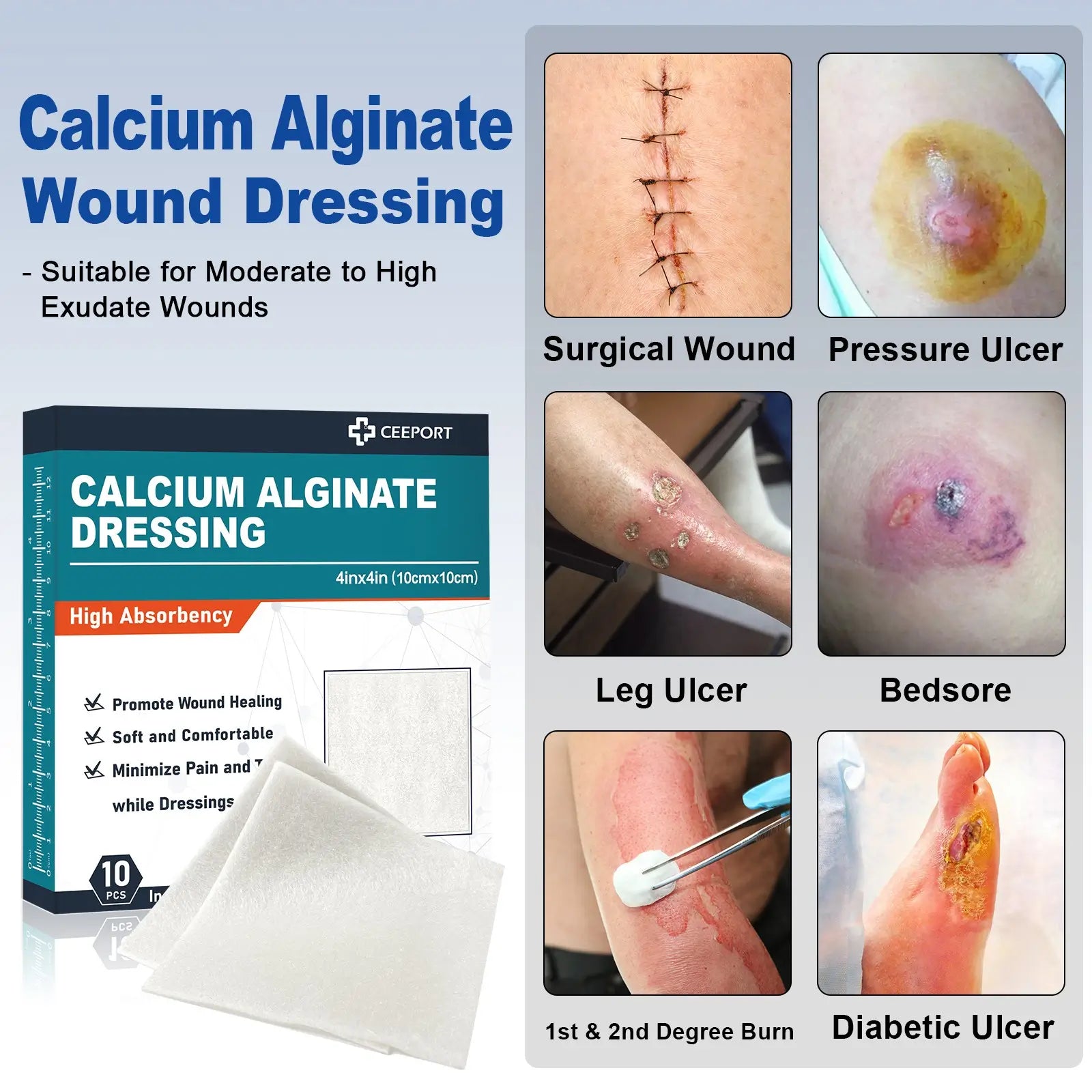
Benefits & Recommended Applications
Effective Exudate Management
This silver calcium alginate wound dressing provides superior absorption for moderate to heavily exuding wounds, reducing the frequency of dressing changes and enhancing patient comfort.
Hemostatic Properties
Calcium alginate fibers facilitate natural hemostasis by promoting clot formation in minor bleeding wounds, supporting acute injury management.
Broad Clinical Versatility
Designed to conform to irregular wound beds, this dressing is ideal for diabetic foot ulcers, pressure ulcers, and graft donor sites, ensuring optimal adaptation to complex wound anatomies.
Easy to Use

1. Clean
Clean and assess the wound asappropriate to ensure that the skinaround the wound is dry.
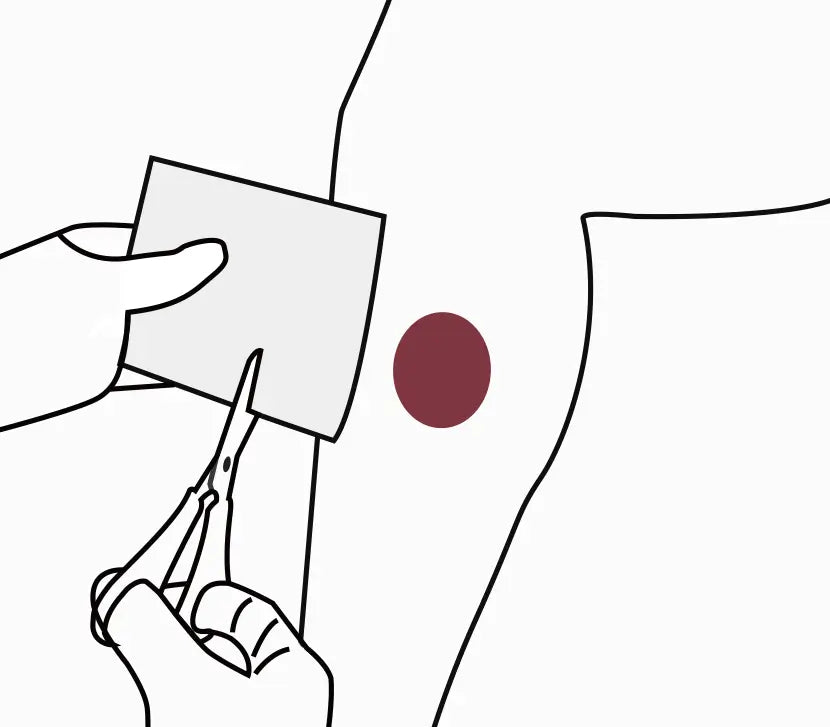
2. Cut
According to the size of the wound, cut it to the appropriate size.
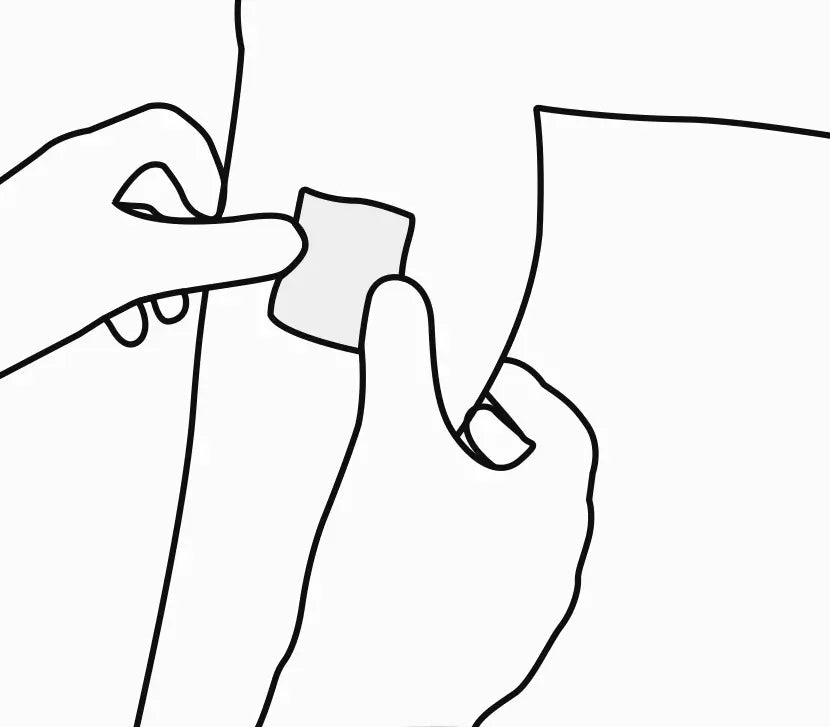
3. Apply
Apply the wound dressing to overlap the wound edges at least 1 cm.
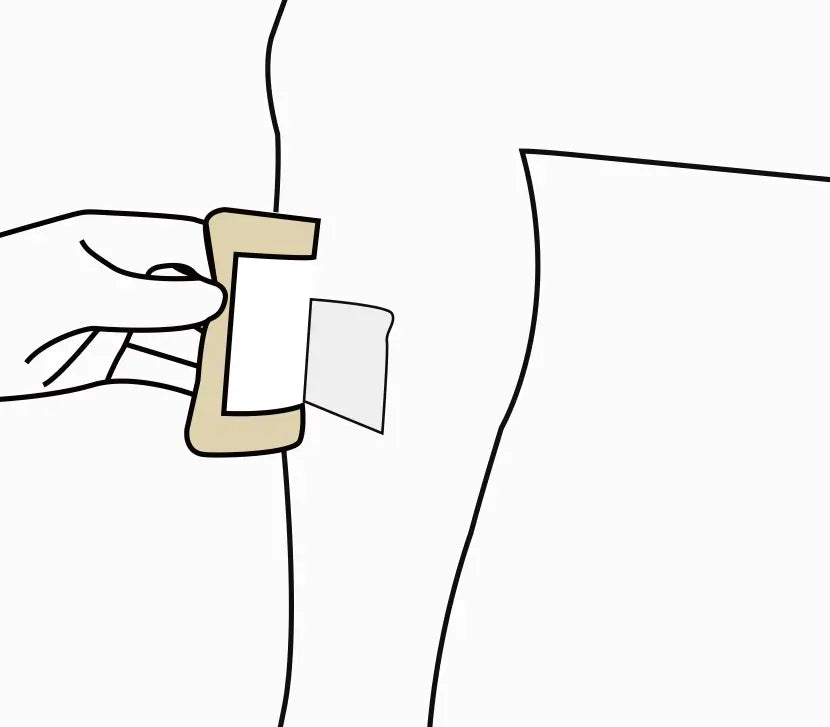
4. Fix
Fixed it with a bandage or dressing.
You asked, we answered.
What is a calcium alginate dressing used for?
Calcium alginate dressings are commonly used to manage moderate to heavily exuding wounds, including pressure ulcers, leg ulcers, surgical wounds, and burns. They are designed to absorb excess exudate while maintaining a moist environment that supports wound care.
How does a calcium alginate dressing work?
When the dressing comes into contact with wound exudate, the calcium ions in the alginate fibers react to form a soft, gel-like substance. This gel helps to absorb fluid and conforms to the wound bed, creating a protective layer that assists in managing moisture and minimizing the risk of maceration.
Can calcium alginate dressings be used on dry wounds?
No, calcium alginate dressings are not suitable for dry or minimally exuding wounds. They require moisture to activate their gel-forming properties. For dry wounds, a different type of dressing designed to hydrate the wound may be more appropriate.
How often should a calcium alginate dressing be changed?
Dressing changes depend on the level of wound exudate. Typically, calcium alginate dressings are changed every 1 to 3 days or when the dressing becomes saturated. Always follow healthcare provider instructions for dressing changes.
Is calcium alginate dressing safe for sensitive skin?
Yes, calcium alginate dressings are generally well-tolerated and are made from natural seaweed-derived fibers. They are non-adherent, which means they are gentle during removal and help reduce trauma to the wound site.




